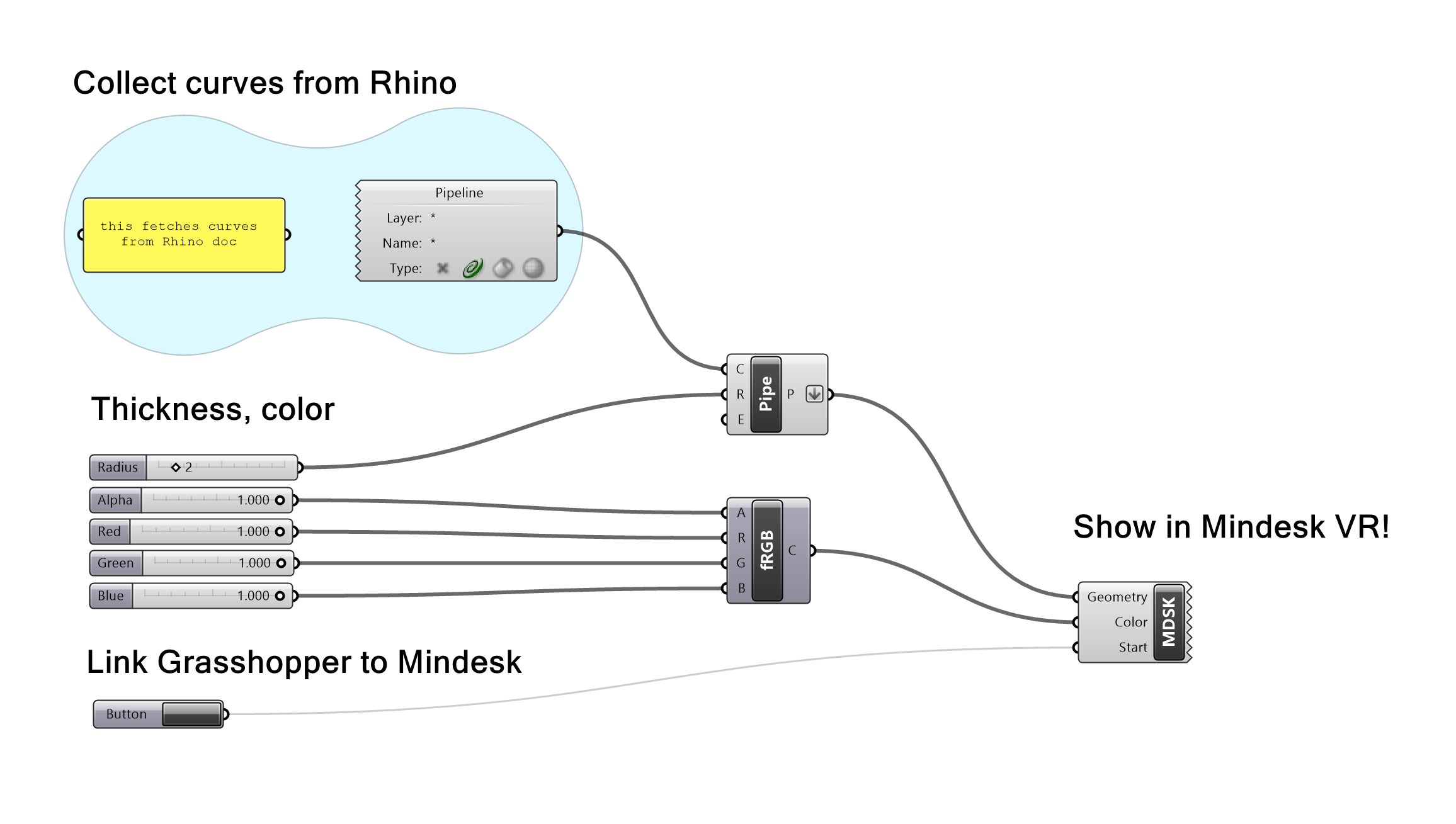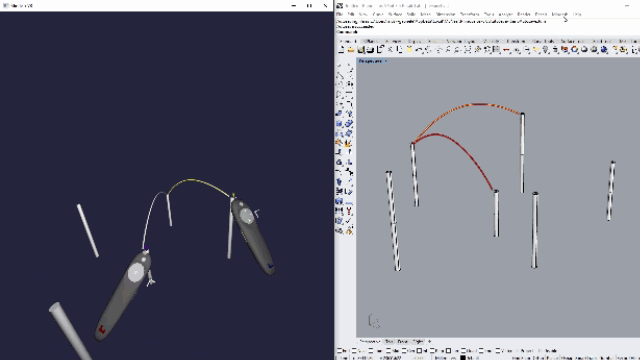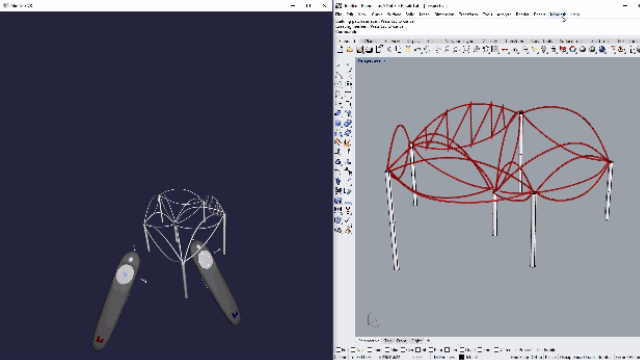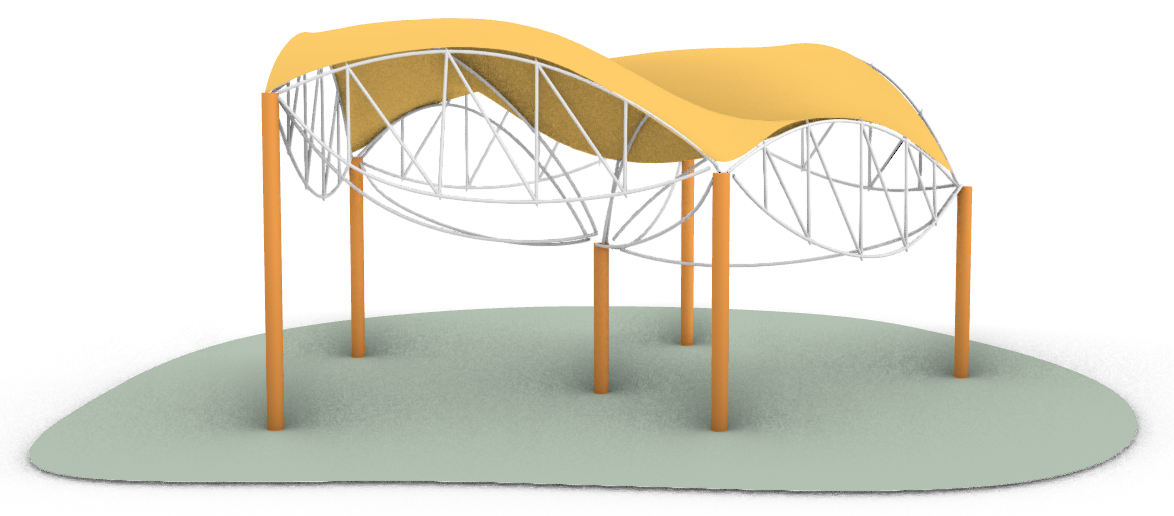Grasshopper jumps into VR
Grasshopper is a parametric design tool developed and distributed by McNeel. It has been recently integrated into Rhinoceros 6 CAD software and allows designers to generate geometries procedurally.
By linking functional blocks together it is possible to build algorithms for the computer and obtain structures with an almost uncapped complexity out of a few simple inputs.
Grasshopper is programming. In Grasshopper you design algorithms that then performs actions inside the Rhino environment.
David Rutten, creator of Grasshopper
There are many ways to control a Grasshopper algorithm. The tree main ones are:
- through the arrangement of functional blocks in the canvas
- through scripting (usually Python, C# or VB)
- by linking and editing Rhino geometries
In particular, it is possible to link Rhino and Grasshopper by assigning one or many Rhino entities to a Grasshopper primitive or by using the Pipeline block. The latter has a more extensive use and can link entire classes of geometries to your script even if they don't exist yet.
This is interesting because you can effectively control your parametric project by creating or editing linked geometries in Virtual Reality from Mindesk.
Placing one or more Mindesk (MDSK) blocks at your grasshopper script will cause the system to display input items (points, curves, BREP surfaces, meshes, colors, etc.), in Virtual Reality.
I have used this technique to prototype a playground for kids. I wanted the structure to be made of steel pipes. The outer frame is made of lenticular trusses while the canopy is a fabric skin.
To prototype the structure I have used this simple script:

it basically:
- collect any curve from the Rhino doc as soon as it gets created
- build a pipe with a given radius and color around each curve
- output the structure in VR
Once the script is set up, I have launched Mindesk in Rhino, pushed the button in the script to link it to the VR runtime and I was ready to prototype my structure.

I used the spline tool to draw the upper and lower members of the lenticular trusses.

The vertical and diagonal members are made through a polyline by snapping at the upper and lower pipe. Notice that you can still snap to it because Rhino keeps the information of the polyline while Mindesk renders the output pipe.
Here's the final render:

Find the full modeling video here.
In conclusion, you can use Mindesk + Grasshopper to make organic structures, or just for form finding. Having a direct 3D feed while experimenting or prototyping can be extremely helpful!
Moreover, you are not constrained to one design process (like making pipes) but you can come up with any geometrical definition and build your structure from scratch.
I would love to know what you think about this and discuss further on our Facebook page.